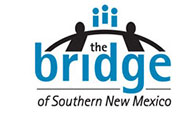The Rest of the Story…
Paul Harvey, the late radio broadcaster, was legendary in his ability to capture audiences with 33 years of daily radio shows about the “stories behind the stories” of historical events, significant (and not so significant) people, discoveries and places
What people loved was that Harvey was able to look behind the story to find an often much richer, more compelling story. The “rest of the story” brought color and depth to facts and names commonly known, but his stories changed the way listeners thought about those things.
He was a master at illustrating the power of “narrative” – how stories shape our perceptions and beliefs about the world we live in.
In New Mexico, the narrative about “The Land of Enchantment” often is characterized in stark contrast to the outcomes we see. For too many families in our state, the economic, educational, physical and health conditions they face are less than “enchanting.” That deficit-based narrative about what we don’t have, what’s broken or why we rank at or near the bottom of a host of state-by-state measures is frequently the one we get stuck in as citizens of this state.
What we fail to recognize is that there is a “rest of the story” for New Mexico. The asset-based narrative that talks about what we do have – what we uniquely have – the ability to make substantial, positive change faster and more broadly than can happen in virtually any other state.
For example:
- If only about 3,000 more students each year cross the finish line to high school graduation, New Mexico will jump from the lowest graduation rate in the country (68.7 percent) to the national average (82.5 percent). NM PED data
- 500 more graduates in Doña Ana County would bring us from 74 percent now to 82.5 percent.
- If we reached that rate, the students would collectively earn more than $28 million EVERY YEAR, if all they do is graduate high school, boosting our economy.
- If we help 4,118 young people 16-24 years old to go back to school or gain employment, we will tie the US national average. If we want to tie New Hampshire for first place, we need to help 18,529 enter school or work. KidsCount Data Center
- If we could help just over 7,000 students with high school diplomas or GEDs in New Mexico Congressional District 2 to earn bachelors’ degrees, we would match the national average. KidsCount Data Center
What if we rallied ourselves and mobilized our communities toward achieving these very real, very reachable goals? What if this was the narrative we used when we talked about how to invest precious state budget dollars and create lasting change in New Mexico.
As we go into a very challenging legislative session, when bringing the budget into balance is of utmost importance, I hope that our elected officials, our community and state leaders, and we, the people of New Mexico, see what is possible and achievable, resisting the urge to fall into the same trap that keeps us behind other states. In this moment, when we can’t throw money at problems, we must prioritize our investments in the things that work, because there are lots of things that do work here. Las Cruces and Doña Ana County are home to many of those things, and we must share this wisdom to benefit of other communities statewide.
When resources are tight, there are two choices: retract or strategically invest. Either direction will have short and long-term impacts on children, families, businesses, institutions, agencies and communities. What is helping children succeed in school? What is increasing graduation rates? What does help families gain the skills they need to secure living wage jobs? What does help existing businesses to grow and hire more workers? What is proven to attract business and industry to locate here over than anywhere else?
This is the “rest of the story” about our upcoming legislative session. It is our role as citizens to rally around our elected officials and help them make strategic investments in what works and let their decisions be guided by all that is possible for New Mexico.

